Hydrogen Fuel
"Right now, hydrogen is produced mainly by splitting hydrogen atoms from natural gas—an emissions-heavy process. If it were its own country, the global hydrogen industry would rank sixth in greenhouse gas emissions, according to 2017 data from energy research firm Wood Mackenzie. “It’s like the size of Germany,” says Merrian Borgeson, staff scientist at the Natural Resources Defense Council environmental group. “Just cleaning that up would be tremendously powerful.” -
Bloomberg 2020-07-28
Reusing gas infrastructure for hydrogen transportation
A standard pipeline can transfer up to ten times as much energy as a 380-kilovolt twin overhead power line with a rating of 1.5 gigawatts, at about one fourteenth of specific cost.
Hydrogen Hype in the Air - The unhealthy mixing of Hydrogen and Natural Gas
"H2 combustion can produce dangerously high levels of nitrogen oxide (NOx). Two European studies have found that burning hydrogen-enriched natural gas in an industrial setting can lead to NOx emissions up to six times that of methane (the most common element in natural gas mixes). Long-term exposure to NOx increases the risk of respiratory conditions and heightens sensitivity to allergens. NOx is also a precursor to the formation of fine particles and ground-level ozone, which are both associated with severe adverse health effects."
Setting health concerns aside, in June of 2021 the European Union agreed existing natural gas pipelines funded for conversion to hydrogen will be allowed to transport a blend of hydrogen with natural gas or biomethane until 2029. Electrolyzers must account for at least 100 MW capacity in each pipeline project - paving the way toward a healthier hydrogen future.
Green Hydrogen from Wastewater, Seawater, Air and Biorefinery Waste
Hydrogen takes center stage in Atlanta as fuel of the future
In just two years, “a small band of believers has turned into a large band of implementers” - Bosch VP.
Companies with 10 or more trucks can now justify having their own hydrogen refueling stations.
Why Hydrogen?
"Hydrogen produced via solar-thermal hydrolysis and transported in shipping tankers [and pipelines] could provide the ultimate environmentally sustainable model.
Methane conversion coupled with carbon capture and storage (CCS) provides a necessary foundational production process which would allow the required regulatory and commercial frameworks to be developed to enable the wider deployment of hydrogen."
Harnessing Sunlight to pull Hydrogen from Wastewater
May 1, 2019 - Uses a silicon interface aided by bacteria (that generate electrical current when consuming organic matter) to split water and isolate hydrogen gas.
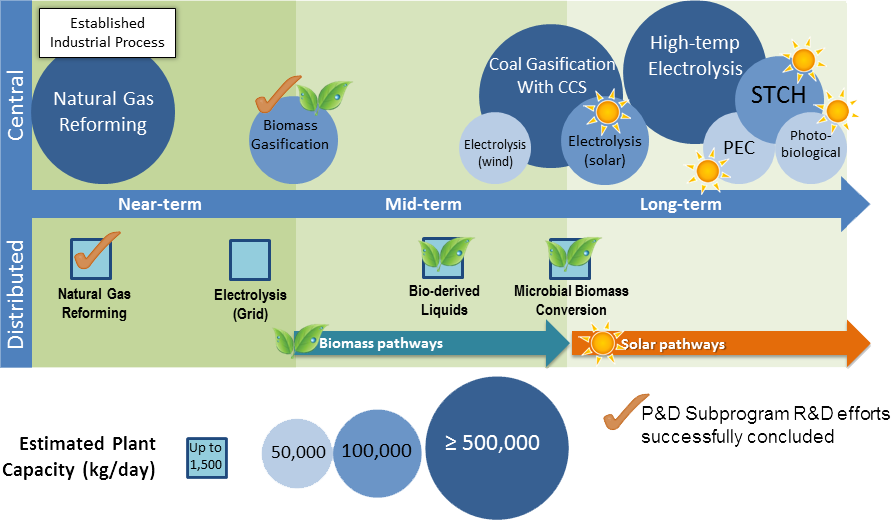
Source:
US Energy Information Administration: Production of Hydrogen
New "Oxygen Evolution Reaction" Catalyst efficiently produces Hydrogen from Seawater
Nov 11, 2019 - Potential for large-scale hydrogen production and desalination using inexpensive non-noble metal nitrides avoids generating ions that settle on the catalyst and render it inactive.
Solar Panel converts Moisture in the Air into Hydrogen Fuel
March 13, 2019 - Each panel converts 250 liters of hydrogen gas per day using sunlight to split water vapor. Hydrogen is stored in underground pressure vessels to heat Belgian homes.
High Purity Hydrogen and Phenolic Resins from Biorefinery Waste
2019 Department of Energy report on Biomass Electrochemical Reactor for Upgrading to Industrial Chemicals and Hydrogen
Harvesting Hydrogen from Tough Biomass
September 10, 2020 - Yulin Deng and his team at Georgia Tech have expanded the uses of lignin by
boosting the upgrade of lignin bio-oil to hydrocarbon fuels. This follows on work in 2016 developing a low-temperature electrolytic technology that harvests hydrogen fuel from obstinate molecules like lignin and cellulose.
Water Splitting Advance for Affordable Hydrogen
March 6, 2020 - A more viable way to store energy from solar and wind power in the form of hydrogen fuel using a nickel-iron based catalyst.
Green process converts almost any carbon source into graphene
"Graphene is the strongest known material. It is comprised of a single layer of carbon atoms arranged in a two-dimensional hexagonal lattice, in which one atom forms each vertex. A tiny amount of graphene can significantly enhance the properties of materials such as plastics, paints, composites, wood composites, concrete, metals, and lubricant. However, it is expensive to manufacture."
Producing hydrogen and graphite from wastewater - Austrailian Demo Project
Uses an unprocessed iron ore catalyst to process biomethane in waste biogas.

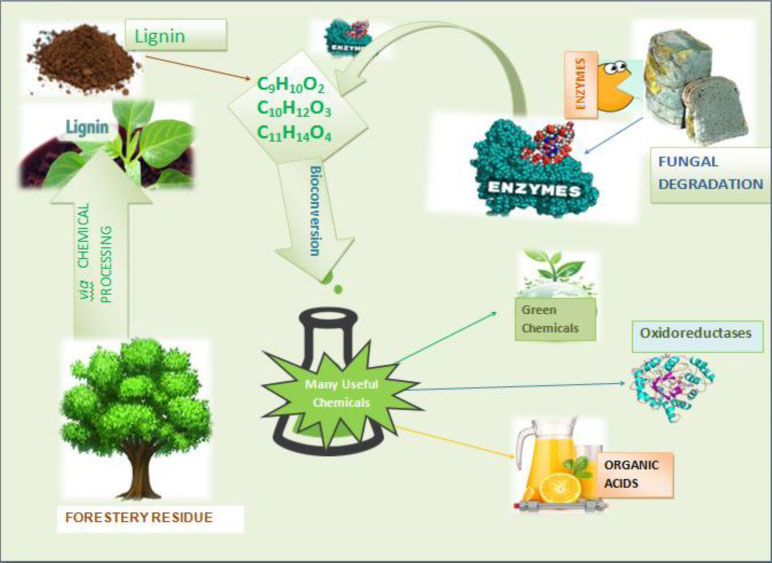
 To establish a mature, native forest in ten times the normal rate of forests planted by humans, amend the soil to a depth of one meter using a locally abundant biomass. Plant three to five saplings per square meter. "This grows into a forest so dense that after eight months, sunlight can’t reach the ground. At this point, every drop of rain that falls is conserved, and every leaf that falls is converted into humus. The more the forest grows, the more it generates nutrients for itself, accelerating further growth. This density also means that individual trees begin competing for sunlight — another reason these forests grow so fast." - TED Fellows
To establish a mature, native forest in ten times the normal rate of forests planted by humans, amend the soil to a depth of one meter using a locally abundant biomass. Plant three to five saplings per square meter. "This grows into a forest so dense that after eight months, sunlight can’t reach the ground. At this point, every drop of rain that falls is conserved, and every leaf that falls is converted into humus. The more the forest grows, the more it generates nutrients for itself, accelerating further growth. This density also means that individual trees begin competing for sunlight — another reason these forests grow so fast." - TED Fellows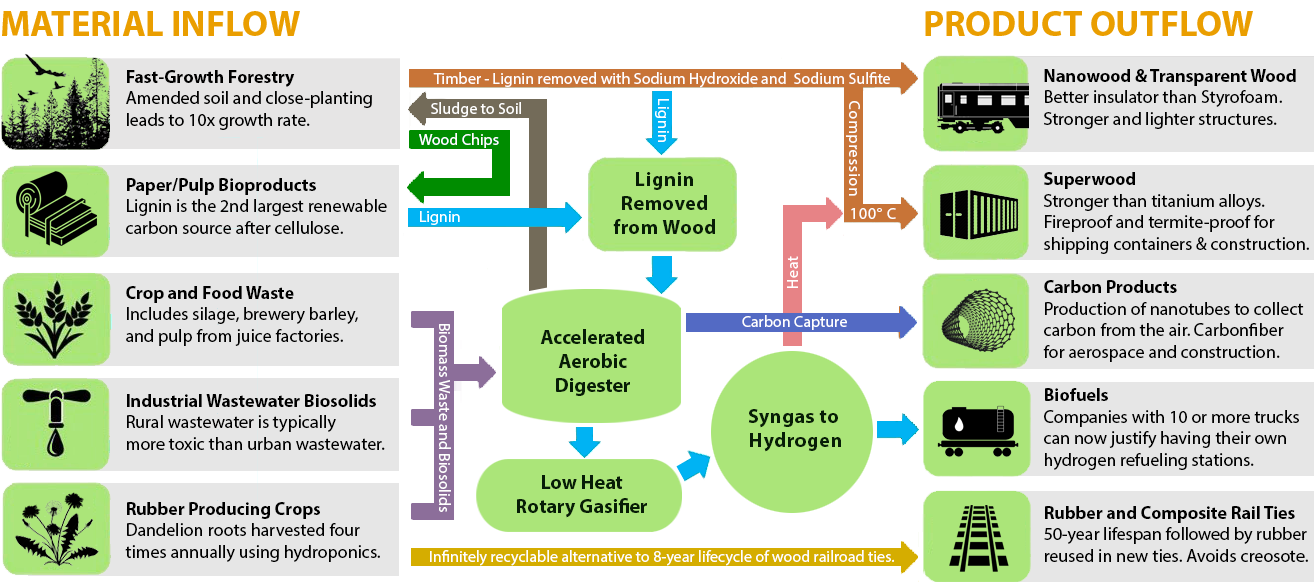




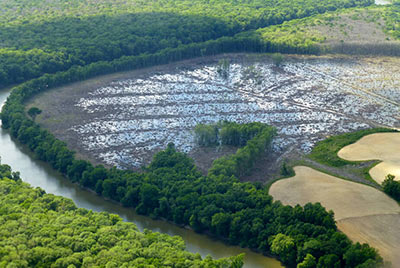



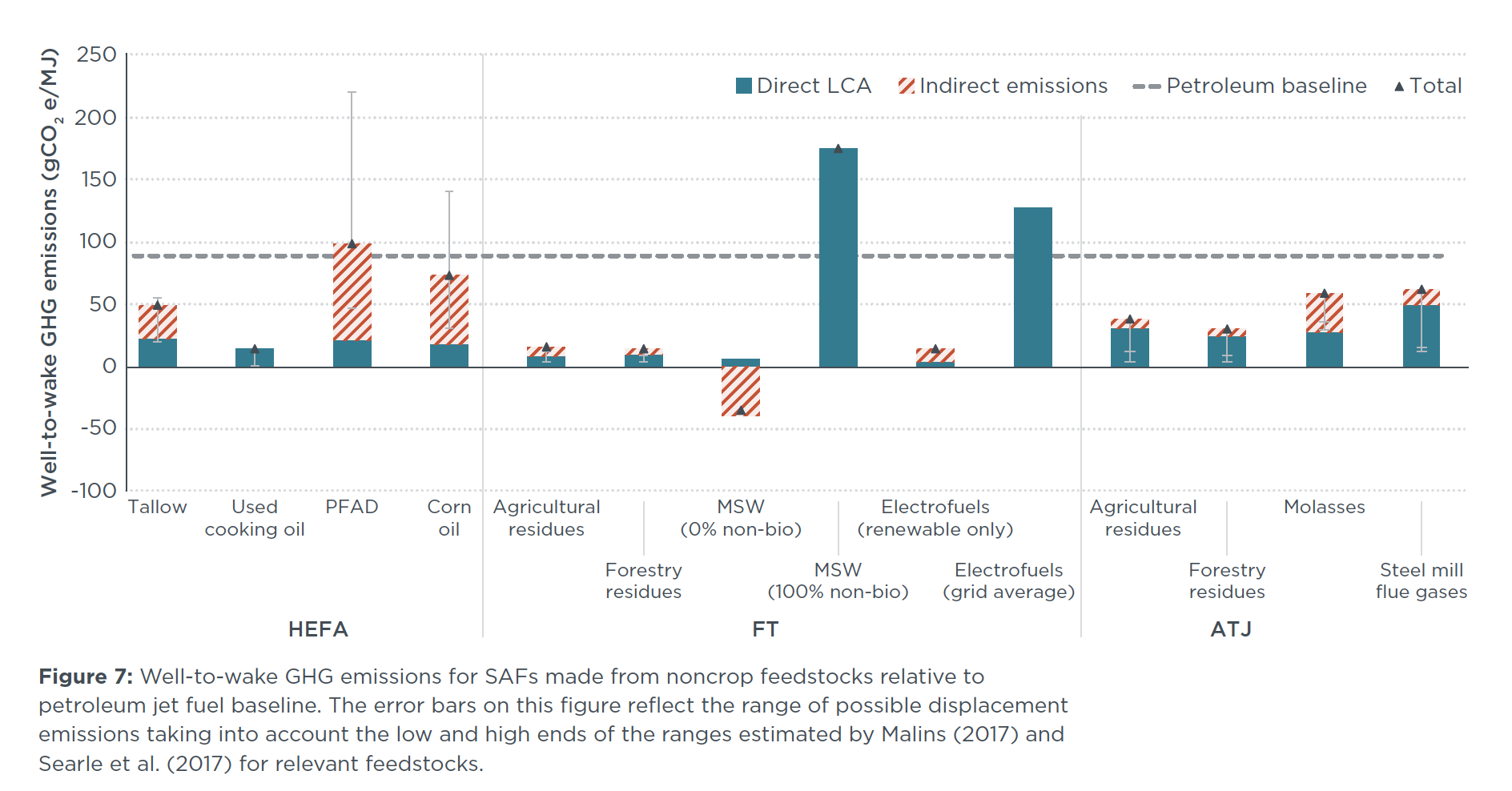
 Rubber and Composite Railroad Ties
Rubber and Composite Railroad Ties